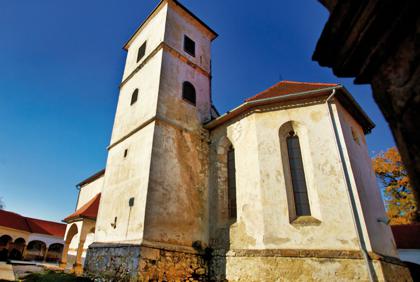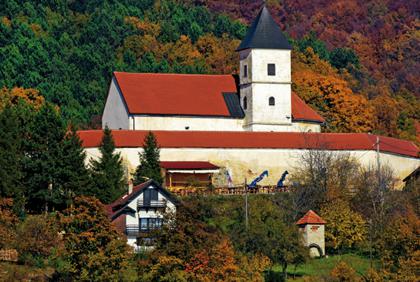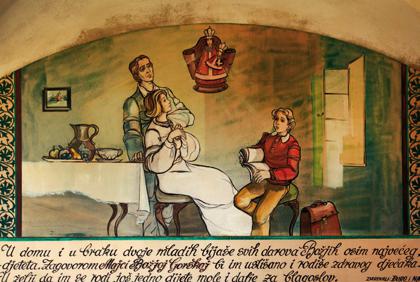Under this cave, which bears the holy edifice on its shoulders, runs a stream of fresh water just as if this were the place where Moses pierced the ground with his magic staff. This is a location full of ancient artifacts bearing traces of life dating back to the bronze Age, Antiquity and the arrival of the Croats. Lobor is often called the cradle of Christianity in northern Croatia. Testimony to this can be found in the baptistery from the Old Christian period and the old Croatian cemetery from the 11th century above which the church was built. All around are ancient structures such as Pusti Lobor (from the 13th century), the Chapel of St. Peter at the nearby Petrova Gora, Oštrcgrad, Loborgrad built by the Keglević family after they abandoned Pusti Lobor… In the distance, Mt. Ivanščica in its name hides the story about the Knights of St. John, while the Knights Templar lived in the nearby Oštrcgrad and considered it their duty to protect pilgrim roads and offer food and logging to the travelers.
It is thought that the sacral structure dedicated to Our Lady exists since the 14th century. Its first mention can be found in the list of parishes of 1344, but then there is no word about it until the visitation of Canons in 1639. A proof that the church is much older than the records suggest is the preserved Croatian wattle, discovered in the chapel in 1946 and dated to 1076. It is the oldest artifact of this kind in continental Croatia and its one part is kept in Lobor, while the other is on display at Zagreb Archeological Museum. Frescos with biblical motifs from the 14th and 15th centuries were also found in the sanctuary. It is a pity they are only fragmentary because they make a unique composition and are a rare example of Gothic wall paintings in continental Croatia.
The first detailed description of the church dates back to 1676. This is approximately the time when the baroque altar with the statue of the blessed virgin with the Child was built. To the side, between the pillars, there are statues of St. George and St. Lawrence with St. Barbara and St. Katherine standing beside them. Above them, in the second plane, there is a relief of Coronation of the virgin Mary as well as the statues of St. Peter and St. Paul. The altar ends with the Golgotha motif at the top.
The baroque atrium only important shrines and pilgrim sites can pride on is the evidence that this was an important pilgrim center. In the 18th century the belfry was added to the church and it also got its pulpit and the organs.It is more than obvious that every century left its mark on the votive church of Deanery of belec, and the thousand years old findings only heighten the awe that overcomes us as we approach Our Lady of the Hills. There are truly many reasons to follow in the paths of these lands, which Matoš, not without reason, compared to Tuscany.
Directions








